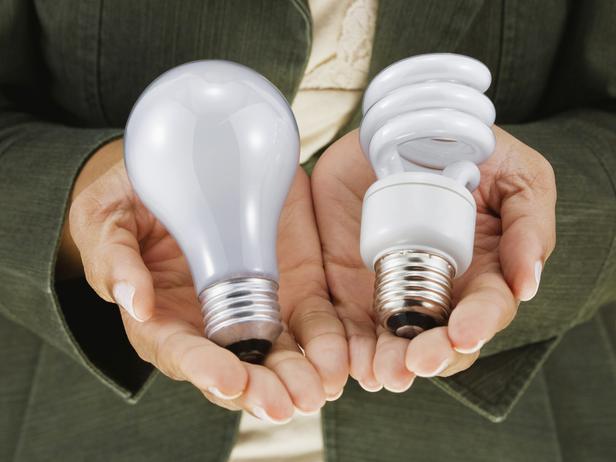With the introduction and establishment of federal energy-efficiency requirements, choosing and understanding different bulb types is more confusing than ever. In the past, people used to plug in another incandescent bulb when the existent one burned out, following the same practices as in Thomson Edison’s times.

Consumers must now be concerned with using bulbs which are beneficial in terms of both money and energy. They have to choose from a wide range of bulbs. Popular options are energy-efficient light emitting diodes (LEDs) and compact fluorescent light bulbs (CFLs).
According to the Energy Trust of Oregon, 20% of home-electricity consumption is taken up by lighting. They have released figures which comprise three main categories of energy-efficient bulbs available to consumers, including LEDs.
Using 85 percent less energy than standard incandescent bulbs, LEDs can last up to 25 years or more. Switching to an LED can save up to $11 a year in energy costs. The latest models are praised for their resemblance to traditional lighting, offering the same bulb shape and familiar, warm light. As technology advances, retailers are quickly dropping prices to as low as $5 or less per bulb, making LEDs a promising new option that can save on energy costs for years to come.
LEDs:
This family of bulbs has the following major characteristics.
Life: It can work up to 25 years or more.
Energy Consumption: Consumes 85% percent less energy than incandescent bulbs.
Switching to LED: If a customer prefers to switch to LEDs, they will enjoy saving of $11 per year in energy costs.
Designing: The latest versions of LEDs have traditional design patterns, such as contemporary bulb shapes and warm lighting.
Economical: Technology is advancing quickly these days, and all energy products are strengthening their technological capabilities. This makes these products identical in terms of quality, so forcing retailers to drop their prices to generate demand. The average price is now as low as $5 or less per bulb.
CFLs:
This family of bulbs has the following major characteristics.
Life: It can survive for 7-10 years.
Energy Consumption: Consumes 75% percent less energy than incandescent bulbs.
Switching to LED: According to Energy Star, customers can save up to $6 per year in energy costs by switching to CFL.
Technology: CFL has responded quickly to technological advancements and improved their existent models with effective technological additions and improvements to earlier models.
Designing: CFL design patterns are versatile and can suitfor nearly any application in terms of shape, size or color.
Economical: Prices can be as low as $1 per bulb with value-delivery.
Halogen incandescent bulbs:
This family of bulbs has the following major characteristics.
New Properties: Incandescent bulbs are still available as new structured and productive versions, which are called Halogen incandescent bulbs.
Life: They can work up to 1-5 years.
Efficiency: Halogen incandescent bulbs are 30% more efficient than non-contemporary bulbs.
Saving benefits: One can save $4 per year in energy costs.
Economical: These bulbs are not cheaper, considering energy costs and the payment one is making. The bulb is priced at $3 with no confirmation of value-delivery over time.
Tips for buying energy-efficient bulbs:
Careful Selection:
- Determine which model you are going to buy, either LED or CFL.
- Decide how many bulbs you need for each chosen model.
- Make sure you know what you need, for example, the bulb’s brightness level and color to match your rooms’ interiors.
Evaluation of lighting facts on the label
It’s important for all lighting-makers to follow the instructions of the Federal Trade Commission and display pertinent lighting facts label on the packaging. Similar to a Nutrition Facts Label, lighting facts label offer important information, for example brightness proficiency, light temperature effects (either warm or cool), the lifespan of bulb and estimated annual operating cost.
You have to make sure that you:
- Review the lighting facts label carefully.
- Compare lighting facts labels of several different models.
Search according to your technological preferences
Many people are interested in buying the latest energy technologies. Buying new, efficient technology means shifting from watts to lumens. Lumens deliver information on how much light a bulb emits, whereas watts provide information on how much power a bulb consumes. Information about lumens is displayed on the lighting facts label.
Here are some tips for understanding lumens:
- Go for fewer lumens if you prefer for a lower lighting level.
- Go for greater number of lumens if you prefer a brighter light.
Choose Energy Star labeled light
Always choose light labeled as Energy Star. These bulbs have the following qualities:
- Energy saving.
- Already tested to ensure top quality and performance.
- CFLs and LEDs with Energy Star labels have greater benefits, as compared to standard incandescent bulbs. Benefits include longer life and increased efficiency.

